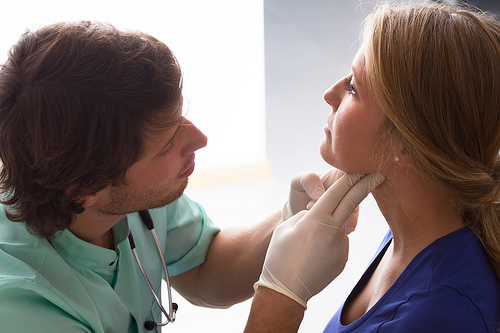One of the best professors that I ever had in Chinese Medicine school was doctor James Giordano. Dr. Giordano taught pathology to Western and Chinese medical students. In my second year of school, I remember when he listed the five cardinal signs of inflammation; redness, heat, swelling, pain, and loss of function. I learned that inflammation can occur anywhere in the body and can be of an acute or chronic nature.
Acute inflammation usually occurs when there is a trauma to the body. There are two kinds of physical traumas; blunt and penetrating. Blunt traumas occur when the impact or force of another object is significant enough to cause physical injury and penetrating trauma happens when the skin or tissues are pierced by an object or burned. Dr. Giordano explained that as soon as cells are damaged, the body responds immediately to protect the injured area. Initially, the blood vessels dilate and increase blood flow to the traumatized area creating the first cardinal sign of inflammation, redness. Soon afterward, fluids leak into the tissue creating the second cardinal sign, swelling. If trauma is on the surface of the body the increased blood flow to that area causes the third cardinal sign, heat. Heat occurs because the temperature of the skin is normally less than that of the blood. The fourth cardinal sign, pain, results from pressure and swelling. Additionally, cellular chemicals called kinins stimulate pain receptors and tell blood vessels to dilate. Finally, the fifth cardinal sign, loss of function occurs as the body attempts to protect the injured area. When an acute inflammatory condition is not treated effectively it may become chronic. Western medicine’s approach to the treatment of inflammation includes pain medications, steroids and in some instances chemotherapy.
It is difficult to establish a direct correlation between Western and Chinese medical views on inflammation. Each medical practice has its unique way of looking at inflammation. For example, the first cardinal sign for inflammation, redness is viewed in western medicine as increased blood flow to the injured area. In Chinese medicine, it signifies that there is heat. Western medicine views pain resulting from pressure from the increased blood flow and swelling, while Chinese medicine describes pain as obstruction or stagnation of the energy (qi) and blood.
Chinese medicine considers the constitution of the individual, the progression of the pathological changes, and the specific imbalance in the body before determining the frequency of the treatments as well as the specific herbs and acupuncture points to be used. The flexibility inherent in Chinese medicine to choose from a variety of treatment options reflects a very sophisticated form of medicine intended to treat each patient in an individualized manner. For this reason, Chinese medicine is very effective in treating inflammatory conditions. It is therefore not surprising to see chronic inflammatory conditions such as osteoarthritis, rheumatoid arthritis, lupus, fibomyalgia, Crohn’s disease, and colitis to respond positively when treated with Chinese medicine. The frequency of treatment will depend on the severity of the problem. Severe conditions are generally treated several times per week, while less severe inflammatory problems can be effectively treated on a weekly or bimonthly basis.


